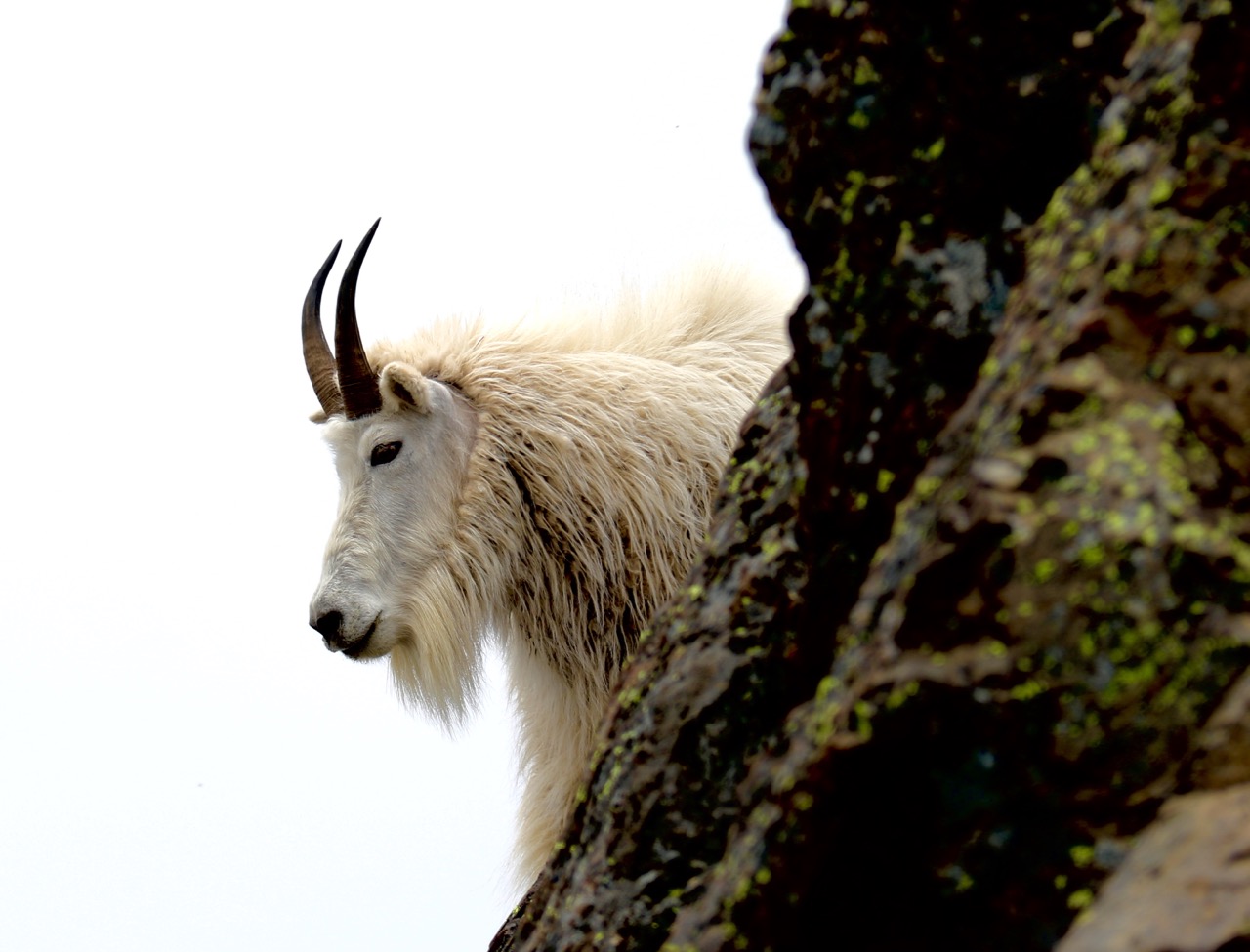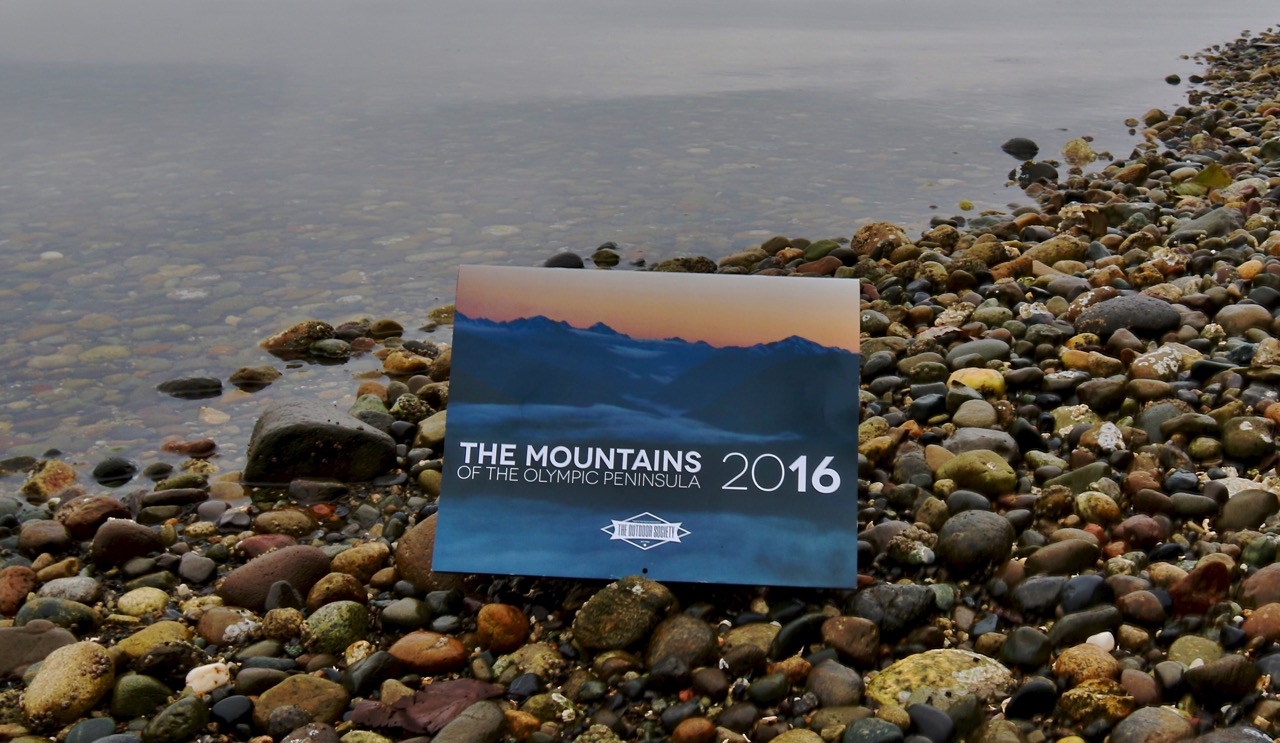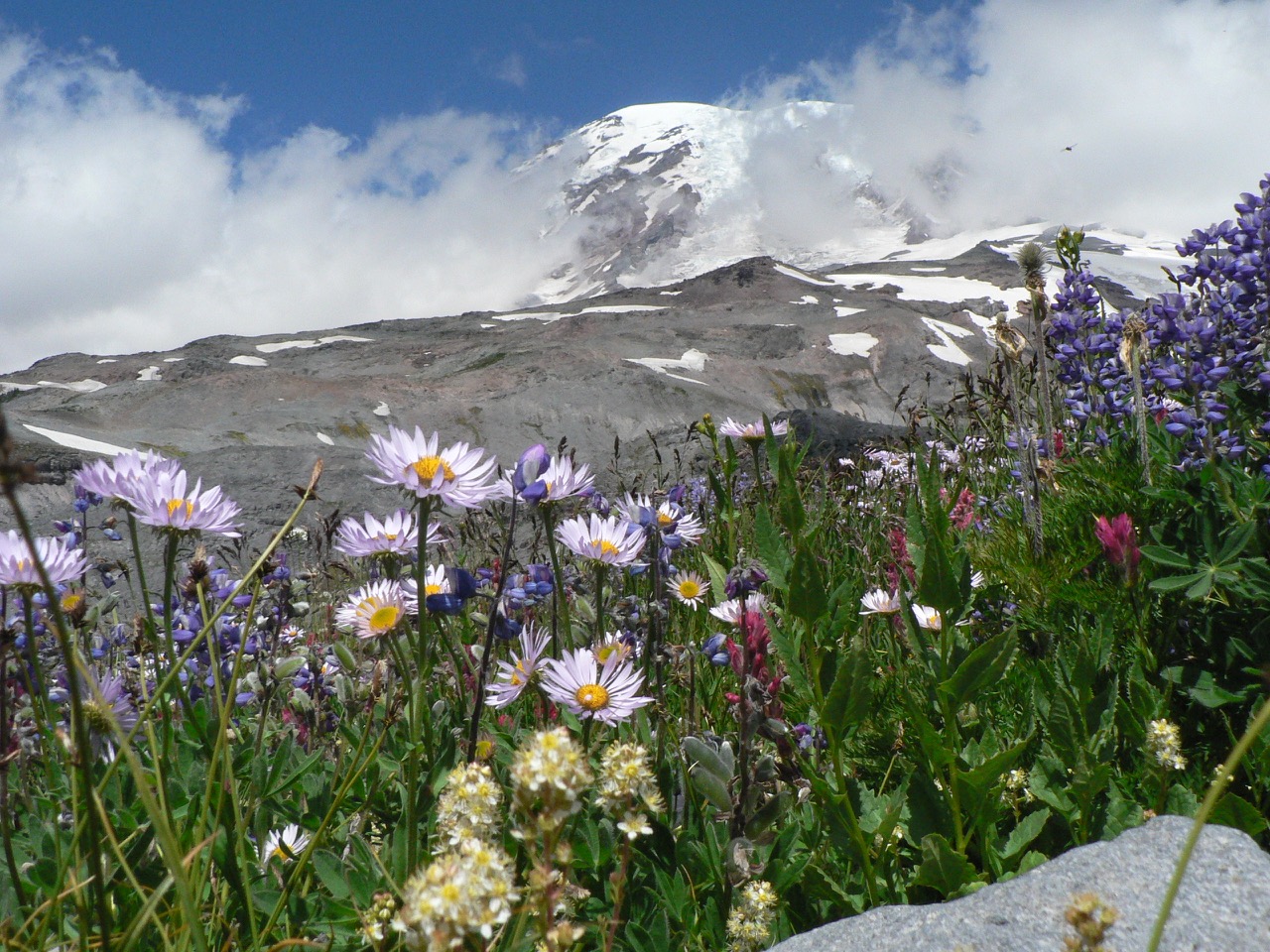On the Olympic Peninsula, mountain goats have been known to cause a lot of drama. Introduced to Olympic on January 1st, 1925 the United States Forest Service released four mountain goats near Mount Storm King above Lake Crescent. The goats, from the Selkirk Mountains in Canada, were placed on Mount Storm King as an experiment to see how adaptable they would be to the rugged mountains of the Olympics. The goat’s ability to adapt, as well as reproduce, saw their numbers increase rapidly, making mountain goat sightings a frequent event on numerous peaks on the Olympic Peninsula. Now, the Park wants to know your thoughts on the goats and their future.
The National Park Service, the U.S. Forest Service and the Washington State Department of Fish and Wildlife are inviting the public to review and provide input about proposed alternatives for managing non-native mountain goats in the Olympic Mountains. The plans vary and like any government process, the paperwork is a bit convoluted and not too user-friendly. We have included the press release in this post, as well as how you can participate.
The TL;DR Version
- Olympic National Park and Forest wants feedback on mountain goat management.
- There are FOUR options, not just killing them, as major media outlets tend to report.
- There will be public meetings held in Olympia, Port Angeles, Everett and Seattle in mid-August. See below for specific times and dates.
- You have until September 26th to comment via website, mail, or with a letter in person at a meeting.
- This is your chance to participate in a decision about the future of YOUR Public Lands.

Olympic National Park Press Release
The draft alternatives are described and analyzed in the Draft Mountain Goat Management Plan Environmental Impact Statement (EIS), which was released today and can be reviewed at https://parkplanning.nps.gov/OLYMgoat. The plan’s purpose is to allow Olympic National Park to reduce or eliminate environmental impacts from non-native mountain goats, and reduce potential public safety issues associated with the goats’ presence in the park.
“We are pleased and grateful for our close collaboration with the Forest Service and the Washington State Department of Fish and Wildlife in developing the draft plan,” said Acting Olympic National Park Superintendent Lee Taylor. “Mountain goats are not native to the Olympic Peninsula and cause impacts to park resources and create safety risks for park visitors.”
The plan alternatives include actions proposed to occur within Olympic National Park and Olympic National Forest, and associated actions proposed by the Washington Department of Fish & Wildlife to translocate mountain goats to the Mt. Baker Snoqualmie and Okanogan Wenatchee National Forests in the Cascades.
A population survey of mountain goats in the Olympic Mountains conducted in summer of 2016 showed that the population increased an average of eight percent annually from 2004-2016. If this rate of population growth were sustained, the population would increase by 45 percent over the next five years. At the same time, mountain goats are native to the North Cascades, but exist in low numbers in many areas. Both the U.S. Forest Service and the Washington State Department of Fish and Wildlife have long been interested in restoring mountain goats to these depleted areas.
The National Park Service announced its plan to develop a Mountain Goat Management Plan/EIS in July 2014. Public workshops were held in August 2014 and public comments were invited. Approximately 100 pieces of correspondence were received and used in developing the Draft Mountain Goat Management Plan EIS.
This comment period also serves as the final designated comment period to provide specific written comments to be eligible to object to the U.S. Forest Service decisions on this project. The opportunity to comment ends 60 days following the date of the publication of the EPA Notice Of Availability in the Federal Register.
The draft EIS is available for review and comment at: http://parkplanning.nps.gov/olymgoat. Copies of the draft EIS will also be available at public libraries in Darrington, Enumclaw, Granite Falls, North Bend, Sedro-Woolley, Skykomish, Sultan, Aberdeen, Amanda Park, Hoquiam, Hoodsport, Forks, Port Angeles and Port Townsend.
Comments will also be accepted during scheduled public meetings or can be mailed or hand-delivered to: Superintendent, Olympic National Park, 600 East Park Avenue, Port Angeles, WA 98362. To ensure your comments are included in this process, they must be entered into the above referenced website or postmarked by September 26.
Comments will not be accepted by fax, email, or in any manner other than those listed above. Bulk comments in hard copy or electronic formats submitted on behalf of others will not be accepted. Before including your address, phone number, email address, or other personal identifying information in your comment, you should be aware that your entire comment—including your personal identifying information—may be made publicly available at any time. While you can ask us in your comment to withhold your personal identifying information from public review, we cannot guarantee that we will be able to do so.
Public Meeting Schedule
There will be a short 15 minute presentation at 5:15 p.m. each evening, except 6:15 p.m. for the Port Angeles meeting, followed by an open house where staff will be present to answer questions. The meetings start in Olympia and end in Seattle.
Monday 8/14: Olympia
Olympic National Forest Supervisor’s Office
1835 Black Lake Blvd. SW
Olympia, WA 98512
Time: 5-7 p.m.
Tuesday 8/15: Port Angeles
Olympic National Park Visitor Center
3002 Mount Angeles Road
Port Angeles, WA 98362
Time: 6-8 p.m.
Wednesday 8/16: Everett
Everett Public Library Auditorium
2702 Hoyt Ave.
Everett, WA 98201
Time: 5-7 p.m.
Thursday 8/17: Seattle
Seattle Public Library
(Douglass-Truth Branch)
2300 Yesler Way
Seattle, WA 98122
Time: 5-7 p.m.
As always, stay safe on the trails, participate in the decisions on YOUR public lands and keep your stance from wildlife. For more tips on animal safety, or to find trails where you might get a glimpse of these majestic, invasive species, purchase one of our guidebooks and get to know Olympic National Park and Forest like an expert.




